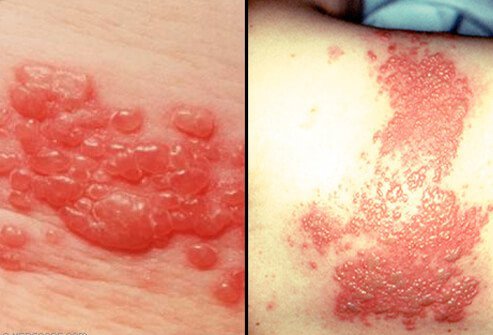What Causes You to Get Shingles?

Shingles (herpes zoster) is caused by varicella zoster virus, the same virus that causes chickenpox. Sometimes, in patients with a history of chickenpox, the virus may live in the nervous system for years in an inactive form, and then reactivate as shingles.
Risk factors of shingles
If patients have had a history of chickenpox, the risk of reactivation of the chickenpox virus as shingles include the following:
- Physical or emotional stress
- Weakened immune system due to HIV (human immunodeficiency virus), cancer or diabetes
- Medication like long-term steroids or immunosuppressant drugs
- Poor nutrition and health
- Major physical injury
- Age over 50.
- Transplant patients
What are the signs and symptoms of shingles?
Shingles typically occurs over one side of the face or body. The common signs and symptoms may include
- Pain (usually the first symptom in shingles and can vary in intensity)
- Burning sensation, numbness, tingling or itching
- Raised red rash, which usually appears a few days after the pain
- Multiple blisters which appear in a stripe or a cluster pattern
- The blisters contain fluid and they break open with crusting
- Fever, chills, fatigue and body ache
- Headache
- Photophobia (sensitivity to light; especially if rash is around the forehead)
- Fatigue
How does shingles rash appear?
The typical red shingles rash and blisters follow pain, itching and tingling. The rash is usually limited to one side of the face and body.
Shingles on the face, scalp, mouth and ear
- Rash and shingles blisters appear on one side of the face, extending to the scalp and ear.
- If the rash involves the ear, it can lead to hearing loss, imbalance and weakness of the facial muscles.
- Shingles rash on the scalp causes pain while combing and bald patches.
- Shingles can occur in the mouth, which is usually very painful, causing pain while eating and change in taste.
Shingles of the eye and forehead
- Rash and blisters appear around the eye, over the eyelids, once side of the forehead, extending to the tip of the nose.
- Patients complain of burning or throbbing in the eye, with watering of eyes, swelling and blurred vision.
- The pain may be present after the rash disappears due to nerve damage, but improves eventually. Without treatment, shingles of the eye and forehead can lead to corneal damage and vision loss.
Shingles on the waist and back
- Rashes and blistering appear over one side of the waist and the back in a stripe pattern, extending up to the lower back.
Shingles on the buttocks
- Shingles rash and blisters over the buttocks, usually on one side.

IMAGES
See Images
How is shingles treated?
Treatment is most effective when begun within 72 hours of the appearance of rash. Antiviral drugs (Acyclovir, Valacyclovir etc) can help you recover faster and reduce the risk of complications.
Shingles rash and blisters can cause severe pain that over-the-counter pain medication cannot control.
Treatment of pain includes:
- Anti-seizure medicines (Pregabalin)
- Antidepressants
- Cool compresses
- Medicated lotions to reduce pain and itching (Diphenhydramine lotion)
- Numbing creams (lidocaine gel)
- Over-the-counter painkillers like paracetamol or ibuprofen
- Prescription painkillers like codeine for intense pain
Prevention: Vaccines are available against varicella zoster virus to prevent chickenpox and shingles.
What are complications of shingles?
Shingles can have complications that last long after the rash is gone. Complications can also occur if the infection has not been treated appropriately:
- Facial nerve paralysis (if rash involves face)
- Loss of vision (if rash involves eyes)
- Postherpetic neuralgia (Pain that lasts long after the infection resolves)
- Loss of hearing and balance problems
- Inflammation of the brain in case of HIV and transplant patients
- Bacterial infection of the skin causing increased swelling, redness, warmth, pain, tenderness and pus formation.
